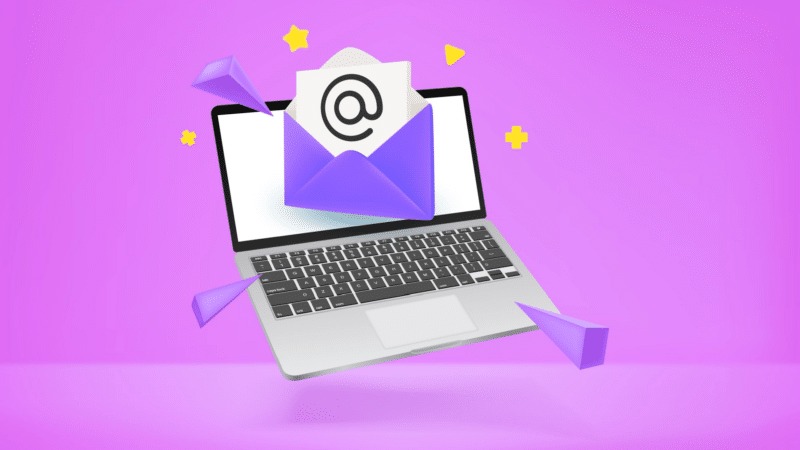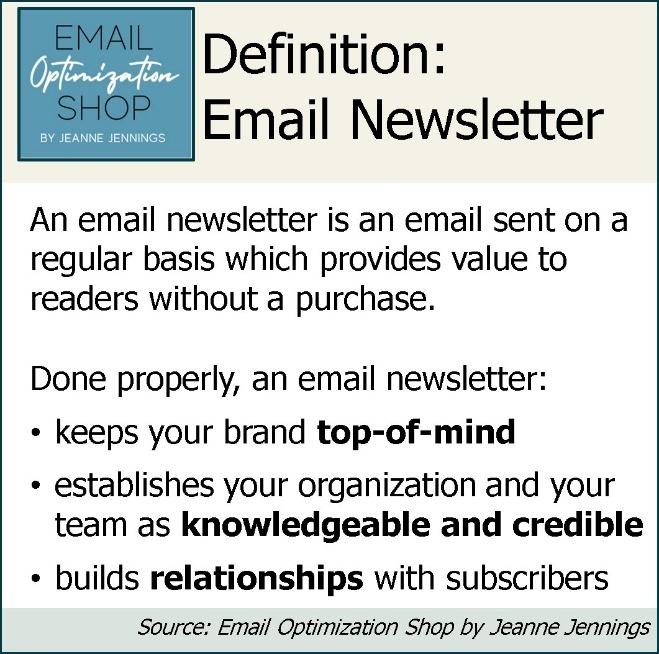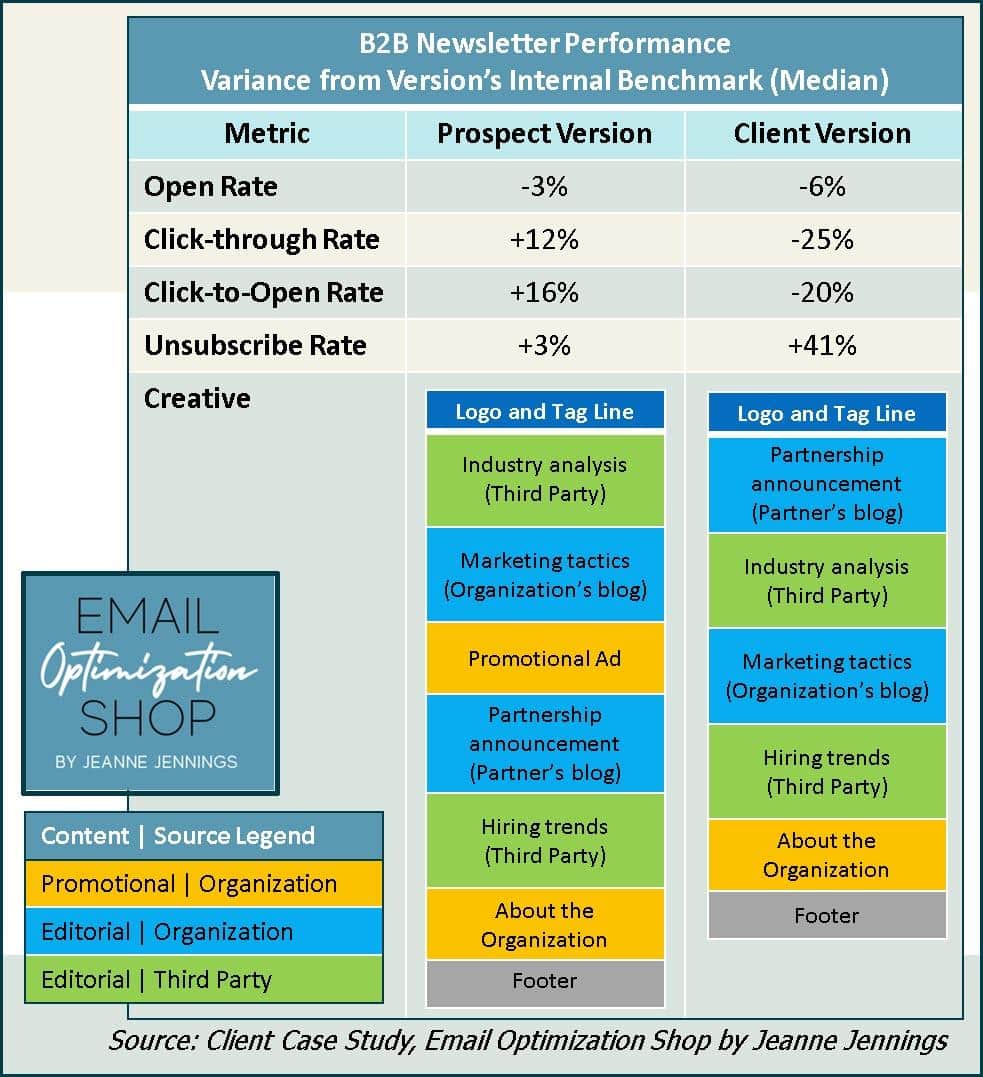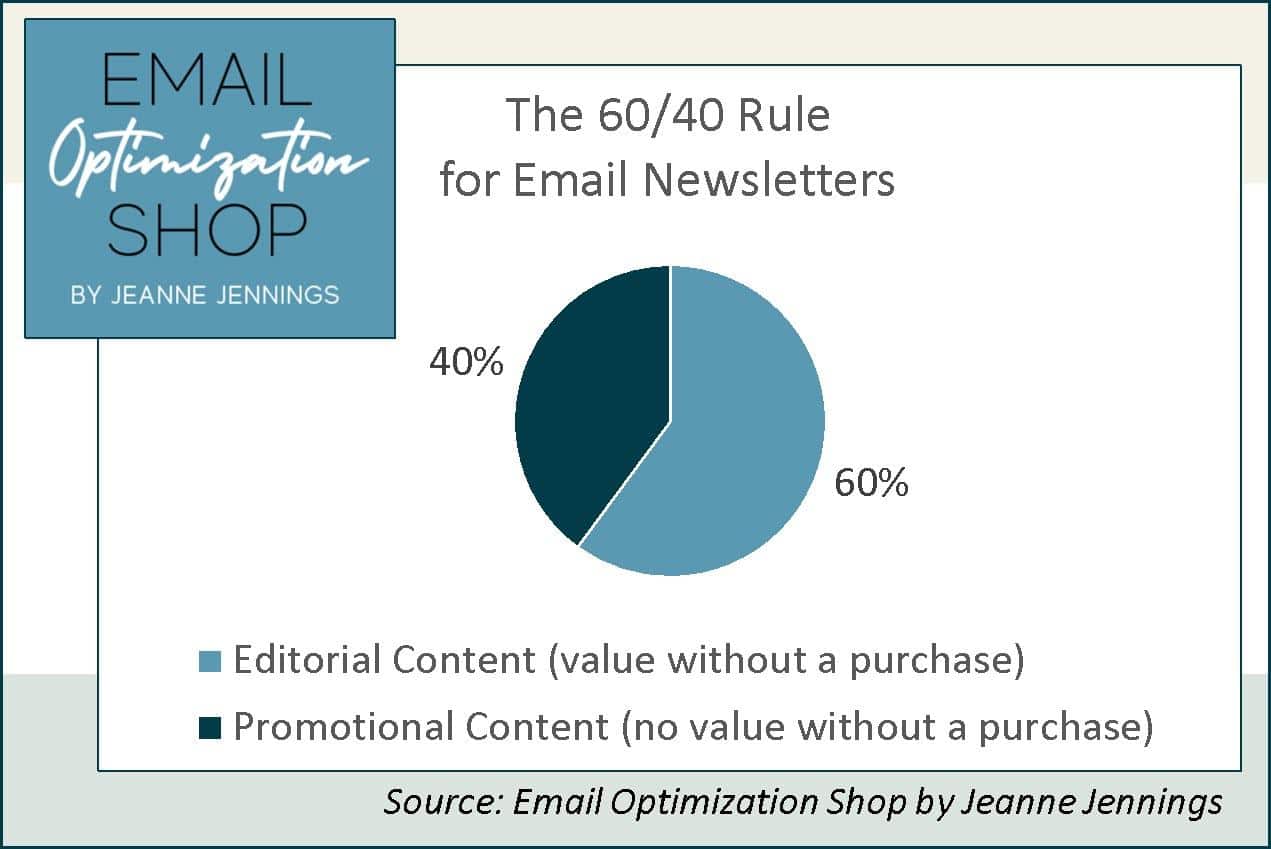
I am often surprised by how many C-level, SVP, VP and even director-level executives delegate the content and other aspects of their email newsletter to junior marketing team members.
When was the last time you read your organization’s email newsletter from the perspective of your email subscribers? When was the last time you asked your email subscribers for their thoughts on your organization’s email newsletter — either in a focus group, via one-on-one interviews (these are the best options) or in a survey?
Here are the key questions you should ask — along with the answers and why they matter — to ensure your email newsletter provides value to your readers and meets your business goals.
Definition of an email newsletter
It’s essential to start here because the definition varies across different regions. For instance, many of my European clients use the term “email newsletter” interchangeably with “email message” — any message a company sends to its subscriber base, regardless of content, is considered a newsletter.
That’s not the case in the United States, where I’m based. An email newsletter is an email sent on a regular basis that provides value to readers without a purchase.
Done correctly, an email newsletter:
- Keeps your brand top-of-mind.
- Establishes your organization and your team as knowledgeable and credible.
- Builds relationships with subscribers.

It’s not that an email newsletter can’t include promotional content — it’s just that an email newsletter should also include editorial content. Editorial content provides value simply by being read without requiring a purchase.
Dig deeper: Email marketing strategy — A marketer’s guide
3 questions to ask about your email newsletter
1. Is the content all about your organization?
The answer should be no. However, this is the biggest issue I see with email newsletters — both in my inbox and in my work with new clients, especially those in B2B. With an email newsletter, you must focus on providing value to your subscribers.
Articles introducing your new hires, discussing closed contracts, sharing news of awards won or announcing new partnerships — even if they are technically editorial and not promotional — don’t provide value without a purchase. They rarely interest prospects or customers and can damage your email marketing program, as shown in the case study below.
Case study
I helped a client create a new email newsletter a year ago. Performance has been good. They make versions for prospects and clients. Typically, the only difference is an ad for their service included in the prospect version.
But a few months ago, they made another slight change. They included a blurb and a link to an article announcing a new industry partnership. It appeared in both versions, but they made it the first article in the client version, as they felt it would interest them. They were wrong.

The client version of the newsletter, with the prominently placed “all about us” partnership article, yielded a click-through rate 25% lower than the median for this newsletter version.
We also saw an unsubscribe rate 41% higher than the median. This was the highest unsubscribe rate we’ve seen for either version since the newsletter launched.
We did not see the same detrimental results in the prospect version of the newsletter, where we led with non-promotional content and placed the partnership piece further down.
Imagine the impact if your entire newsletter is “all about us” content. It won’t take long for all your metrics to drop precipitously. And then, good luck getting people to start opening again.
Your focus should be on providing value to your subscribers without a purchase. Think holistically.
What can you send that will help them:
- Stay current on trends in their industry.
- Understand issues impacting their organization.
- Improve their job performance and/or career path.
Content that’s interesting to them will get your email newsletter opened consistently — and may help improve the metrics on your promotional emails as well.
Dig deeper: Does your email copy persuade or sell?
2. Does the newsletter advance your organization’s business goals?
The answer here should be yes. Unless this is a paid-subscription email newsletter, you’re probably looking to drive leads, sales, referrals, ad revenue or some other business-enhancing action.
There are several different ways to advance business goals. The most obvious is a promotional ad in the newsletter — every newsletter should have one. It might be a call to action to fill out a lead generation form or an offer to download a white paper that helps educate subscribers on your product or service.
Even the non-promotional content can help achieve this goal. For instance, in the case study above, we always include a post from the organization’s blog that showcases its understanding of the challenges faced by prospects and clients — and its industry expertise.
Another example is the third-party non-promotional content. While it’s not promoting the organization’s product or service, it provides information showing the organization understands what’s of interest and value to professionals in the industry.
Dig deeper: Beyond ‘click here’ — 4 rules for better email CTAs
3. Is the newsletter at least 60% non-promotional content and no more than 40% promotional content?
The answer here should also be yes.

I’ve used this ratio for years, and you can see it in action in the case study creative above. We see a negative impact on performance whenever we try to cheat on it.
Bottom line
Successful email marketing is about what you send — not just getting the email out. Sending content that is irrelevant or not of interest to your subscribers can have a long-term negative impact on the effectiveness of your program.
Dig deeper: 6 ways email marketing can elevate customer engagement and loyalty
The post The biggest email newsletter mistake B2B companies keep making appeared first on MarTech.
